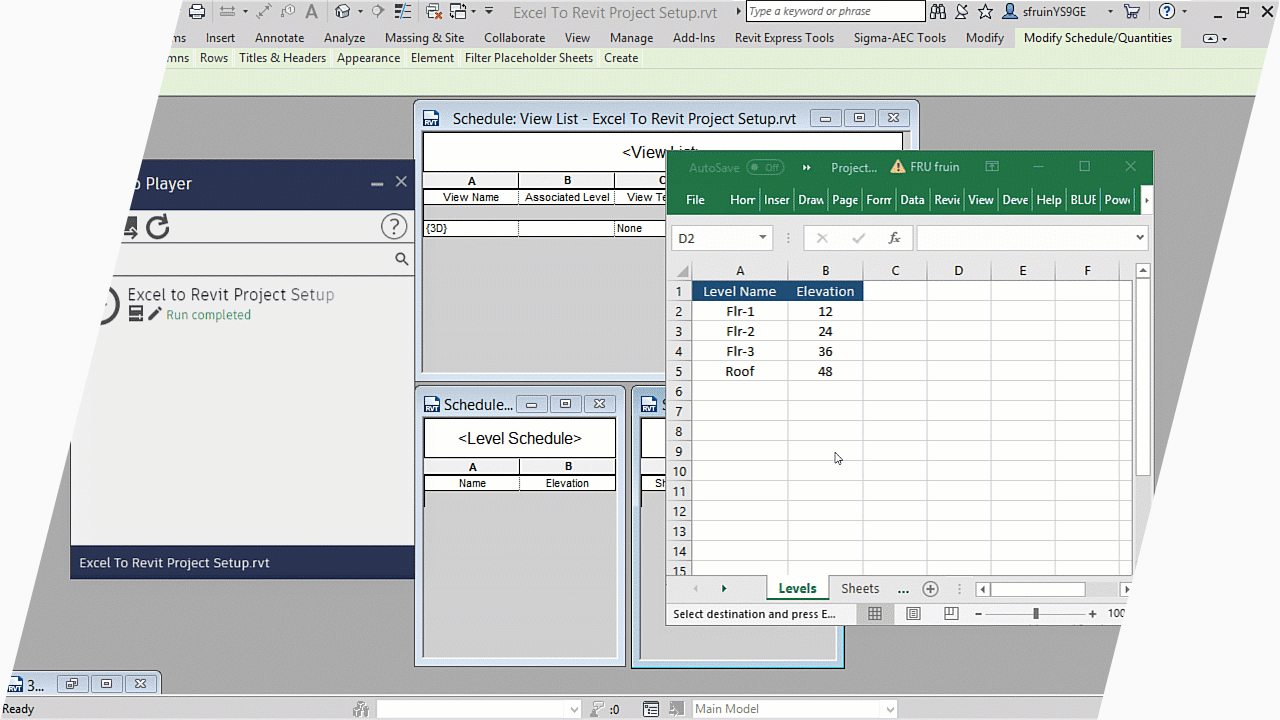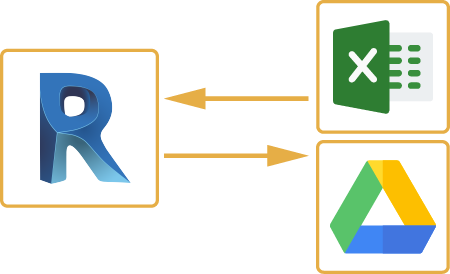Import Excel into Revit: Simplifying Your Workflow
Wiki Article
Excel-to-Revit: A Game-Changing Process for Architectural Design - Revealing the Secrets
Are you tired of investing hours on architectural style? Look no more! Introducing excel-to-revit, the game-changing operations that will change your style process. With excel-to-revit integration, you can streamline your building design, unlock effectiveness, and optimize partnership within your team. In this short article, we will certainly introduce the tricks of this effective device, revealing you just how it can change your layout projects. Get prepared to take your building layout to the following level with excel-to-revit!The Power of Excel-to-Revit Combination

Envision the comfort of being able to update and modify job data in Excel, and instantly see those changes reflected in your Revit version. No more manual data access or tedious updates. With Excel-to-Revit integration, you can save time and reduce errors by leveraging the power of Excel's features and formulas to immediately produce accurate information in Revit.
Not only does this assimilation boost efficiency, yet it additionally boosts cooperation amongst employee. You can conveniently share Excel documents with coworkers, that can then import the data into their Revit designs. This promotes a seamless exchange of information and makes sure that everybody is dealing with one of the most up-to-date information.

Improving Building Design With Excel-To-Revit
Streamlining building design is made easier with using Excel-to-Revit (revit tools). With this effective combination, you can maximize your operations and save beneficial time throughout the layout process. By leveraging the abilities of Excel and Revit, you can effortlessly move data between the two systems, removing the need for hands-on information entrance and reducing the danger of errorsExcel-to-Revit enables you to import and export information effortlessly, enabling you to easily update and customize your architectural designs. You can create schedules, calculate amounts, and create reports in Excel, and afterwards move that information directly right into your Revit version. This assimilation guarantees that your style info is always up-to-date and synchronized, removing the demand for manual updates and reducing the chances of disparities.
By using Excel-to-Revit, you can also take benefit of the effective computational capabilities of Excel. You can do complex computations, evaluate data, and automate repetitive jobs, all within Excel. With simply a few clicks, you can import the results back right into Revit, permitting you to make enlightened style choices and optimize your building layouts.
Opening Performance: Exploring the Excel-to-Revit Workflow
Optimize your productivity by perfectly incorporating Excel and Revit for an extra efficient operations. With the Excel-to-Revit workflow, you can unlock an entire brand-new degree of performance in your building design procedure. By utilizing the power of Excel's data administration capacities and combining it with the adaptability and accuracy of Revit, you can simplify your layout procedure and conserve beneficial time.Among the crucial benefits of this integration is the capability to import and export data in between Excel and Revit. This means that you can conveniently transfer project information, such as room routines or product quantities, from one software program to the other, getting rid of the need for hand-operated data access and lowering the opportunities of mistakes. You can also create customized formulas and estimations in Excel to automate recurring tasks and do complicated estimations, which can after that be perfectly integrated into your Revit designs.
In Addition, the Excel-to-Revit process permits for better control and collaboration between staff member. With Excel working as a main data hub, numerous staff member can work with various facets of the project simultaneously, sharing and upgrading information in real-time. This not just boosts interaction but likewise makes certain that every person is collaborating with the most current data, removing the danger of disparities.
Maximizing Cooperation: Excel-to-Revit for Architectural Teams
By seamlessly integrating Excel and Revit, architectural groups can considerably improve cooperation and achieve much more reliable style results. When utilizing this powerful workflow, you can easily transfer information between Excel spreadsheets and Revit versions, improving the design procedure and enhancing interaction among group participants. With Excel-to-Revit combination, you can easily import task data, such as room schedules, product amounts, and job parameters, directly right into Revit, eliminating the requirement for manual information entrance and reducing the possibilities of mistakes. This seamless link permits for real-time updates, ensuring that everyone is collaborating with one of the most up-to-date details and staying clear of discrepancies between various files.Moreover, by leveraging Excel's effective computation capacities, you can execute intricate estimations and evaluation on your design information, giving useful insights and driving notified decision-making. revit plugins This combination likewise enables you to export data from Revit to Excel, enabling you to create detailed reports, graphes, and graphs for discussions and analysis. This collaborative operations promotes efficient interaction and coordination among employee, as Excel serves as a central center for information administration and sharing.
Overall, by embracing the Excel-to-Revit process, building groups can accomplish greater degrees of collaboration, effectiveness, and precision in their layout process. revit tool. This integration equips teams to interact perfectly, making sure that everyone gets on the exact same page and adding to the success of the job
Revealing the Keys of Excel-to-Revit Assimilation

Among the tricks of Excel-to-Revit assimilation is the capability to leverage the power of solutions and calculations in Excel to drive parameters and produce complex geometries in Revit. You can connect Excel spreadsheets to Revit households, enabling you to input data straight into the spreadsheet and have it automatically update in the Revit version. This enhances the layout process and makes sure precision and consistency throughout the project.
Another secret is the ability to produce custom-made timetables and records in Excel, using information removed from Revit. This allows you to evaluate and visualize job information in a manner that is not possible within Revit alone. You can conveniently produce amount liftoffs, price estimates, and job timelines, offering valuable insights for decision-making and project administration.
On top of that, Excel-to-Revit integration enables reliable collaboration among team members. Several customers can function on the exact same Excel spreadsheet all at once, making it easier to collaborate and track adjustments. You can additionally use Excel's commenting attribute to offer comments or connect style modifications.
Conclusion
By incorporating the power of Excel and Revit, engineers can now function a lot more effectively, save time, and create far better styles. Begin incorporating excel-to-revit integration into your building design procedure today and reinvent the means you function.With simply a few clicks, you can import the outcomes back into Revit, permitting you to make informed style choices and maximize your building designs.
By using the power of Excel's data administration abilities and integrating it with the versatility and accuracy of Revit, you can simplify your layout procedure and save important time.
By flawlessly integrating Excel and Revit, building teams can greatly enhance cooperation and accomplish more effective layout outcomes. When utilizing this powerful operations, you can conveniently move information between Excel spreadsheets and Revit designs, streamlining the design procedure and improving communication among team participants.In addition, by leveraging Excel's effective estimation capacities, you can do complex computations and analysis on your layout data, driving and supplying useful understandings informed decision-making.
Report this wiki page